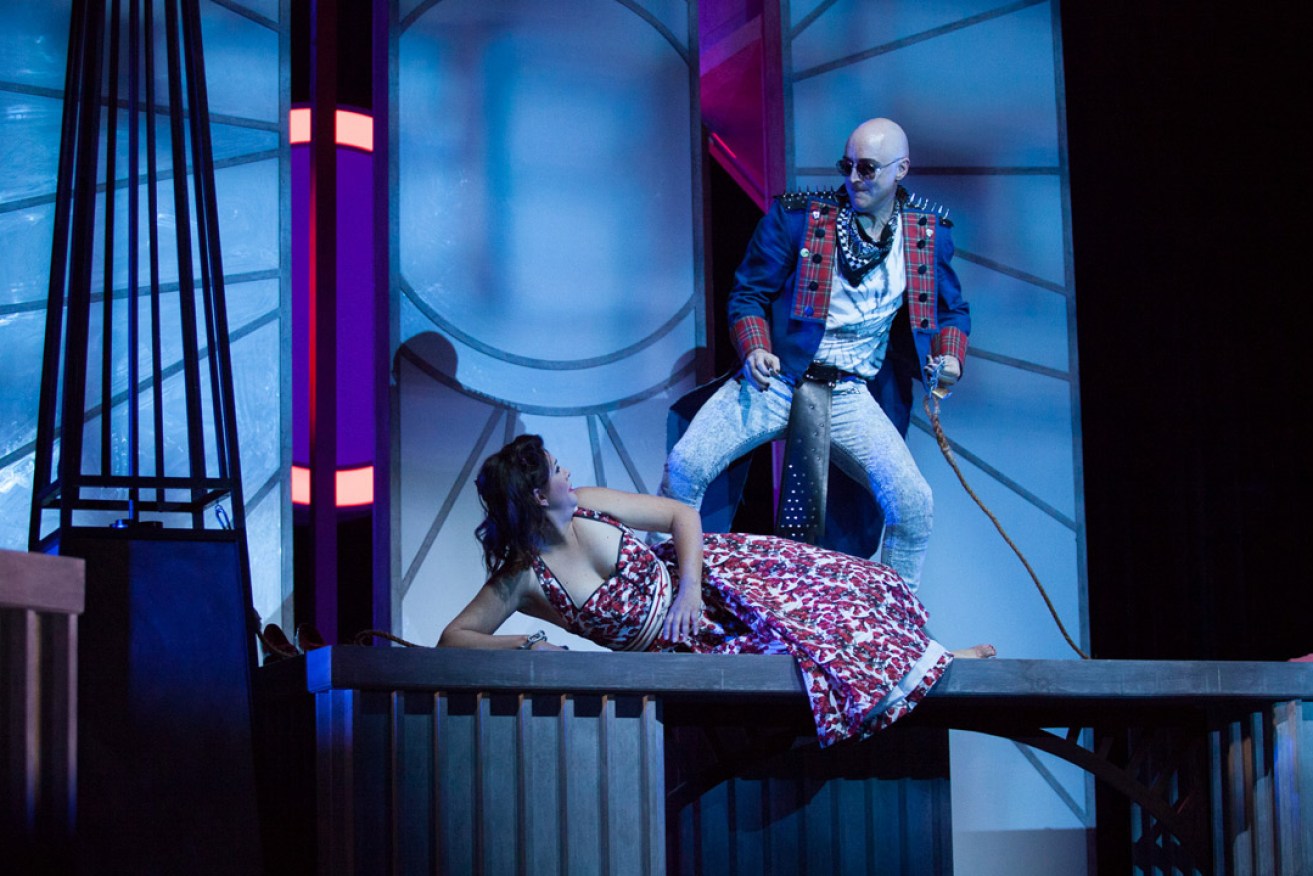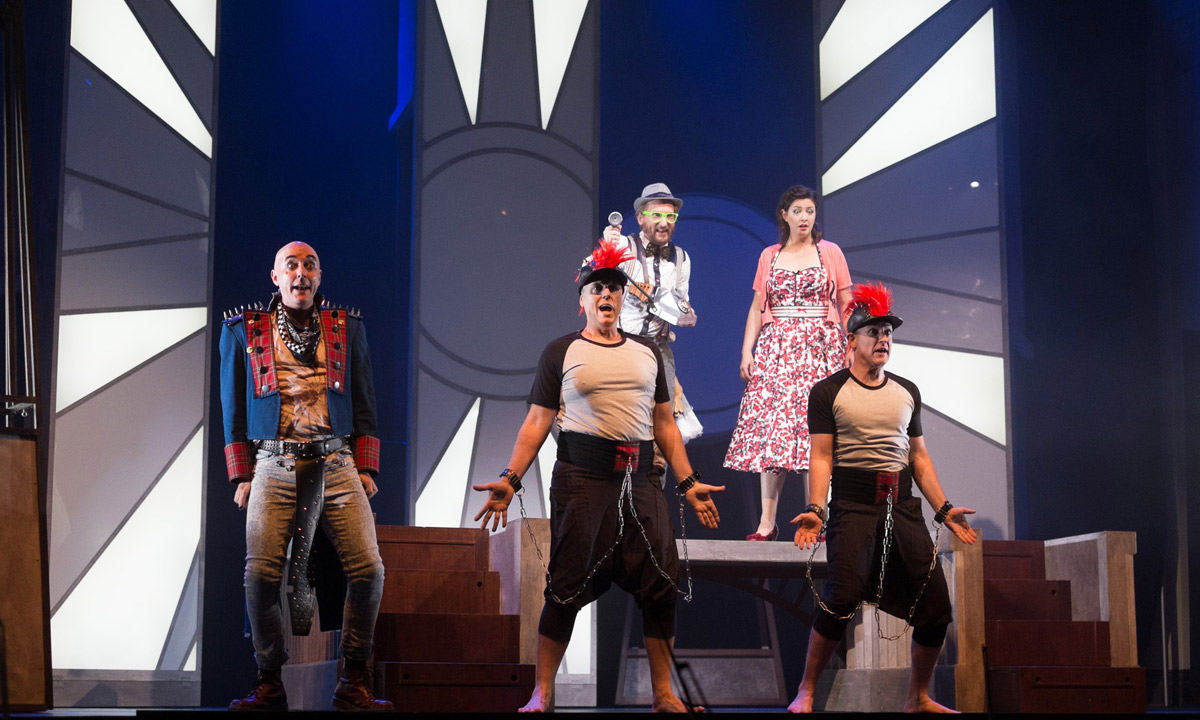Review: The Magic Flute
State Opera of SA has chosen to stage The Magic Flute in the Freemasons Great Hall on North Terrace because both composer Wolfgang Mozart and librettist Emanuel Schikaneder were Freemasons and their opera contains Masonic symbolism.

State Opera's The Magic Flute. Photo: Darren Williams
The Magic Flute is the story of an ordinary man, Tamino, who is transported by three powerful spirits to another world where he undergoes a series of trials that transform him into a better man. The Freemasons is a society of mystery, symbolism, ritual and ceremony, so it is an appropriate venue.
Luke Dollman has the Adelaide Symphony Orchestra bring Mozart’s score to life in the very warm hall, where director and designer David Lampard has created a cleverly lit and impressive set featuring circles and masonic symbols.
The creative team creates the illusion of an eclipse which allows the transformation of Tamino and for the magical world to be created.
We see the beauty of Daniel Barber’s lighting design very early and, although it is varied and picturesque in later scenes, the magic of this effect peaks too soon and the set, with its numerous changes and repositioning, tends to dominate the singers.
The costume designs are adventurous: sometimes a fusion of almost ordinary streetwear with tacked on animal bits. The three gorgeous genies looked a little like Ewoks (especially with the magic flute being like a mini lightsaber).
Brenton Spiteri sings well and brings a certain dignity to the role of Tamino, but the character lacks a sense of the adventure and transformation. Nicholas Cannon, by contrast, plays Papageno for laughs as a scatter-brained, talkative chap, but when he sings he has some delightful moments.
Adam Goodburn is terrific as Monostatos; he has a great voice and develops a sense of malevolence on stage as he moves fluidly in his jeans and bright blue military coat. Naomi Hede, as Pamino, Tamino’s love, in a red floral dress and short-sleeved cardigan, is captivating as she delivers two of the best arias of the evening when she sings of her fear of losing her love.
Joanna McWaters, Queen of the Night, is a brilliant singer and powerful performer but she slips into melodrama and really needed the set to assist her with more night-time atmosphere. Robert England, as Sarastro, the Grand Master of the brotherhood, is tall and dressed in an impressive long white coat, however his character portrayal is wooden and does little to drive the story along.
State Opera artistic director Timothy Sexton has the chorus in good voice, and the male choruses and combined choruses at the end of each act present stirring and riveting pieces of music. The Magic Flute is immersed in maleness, and lines about a woman needing a man to guide her way are still hard to hear despite the era in which the opera was written.
Lampard has produced some exceptionally good work in the State Opera’s Netley Studio which has enabled South Australian talent to flourish and be seen, but with Magic Flute he seems to have focused on his grand set and relied too heavily on the brotherhood cast standing ceremonially to have impact. Regardless of the quality of the technical effects, the magic of this opera needs to come from the cast.
The Magic Flute is at the Freemasons Hall until February 24.





